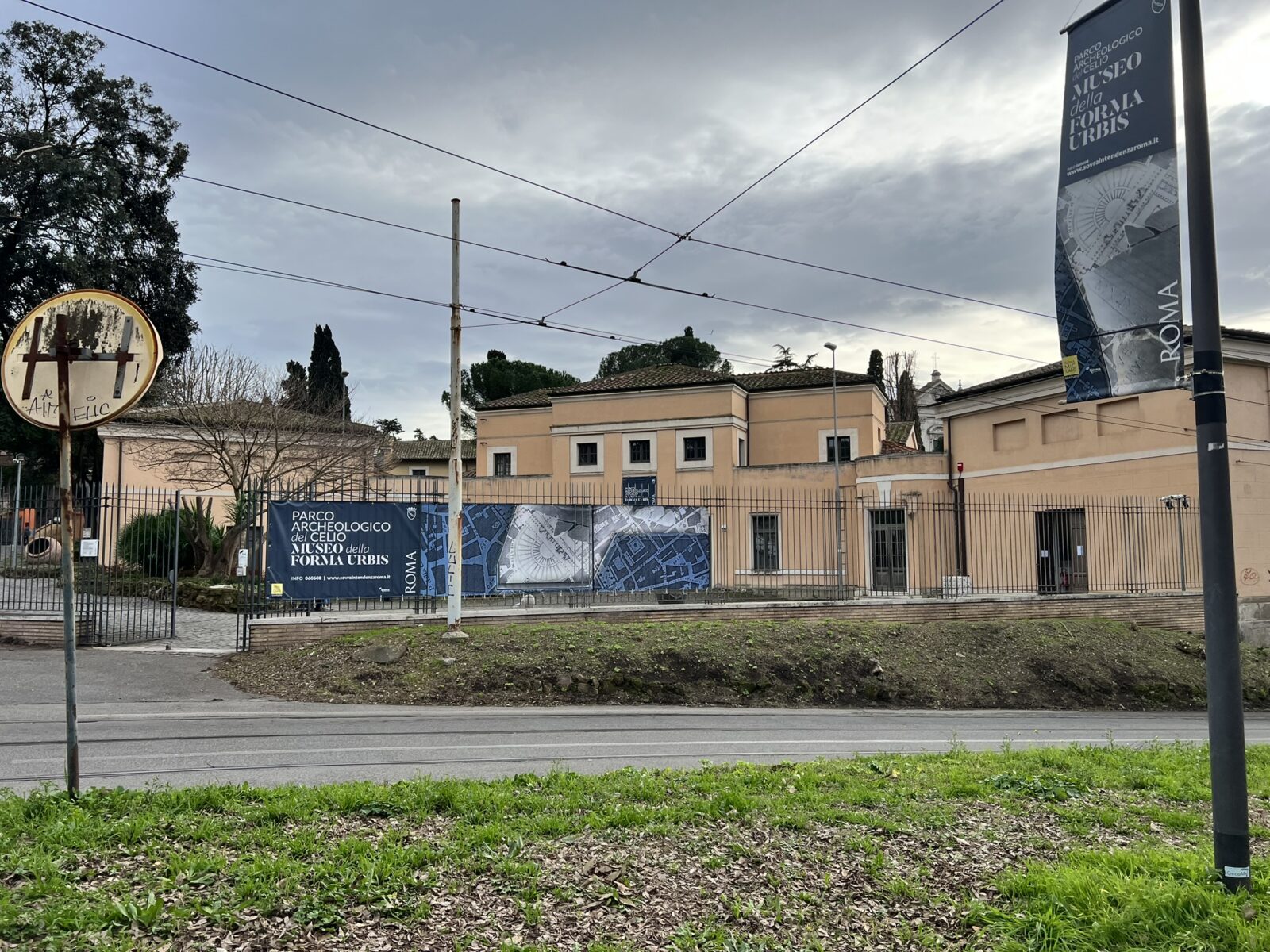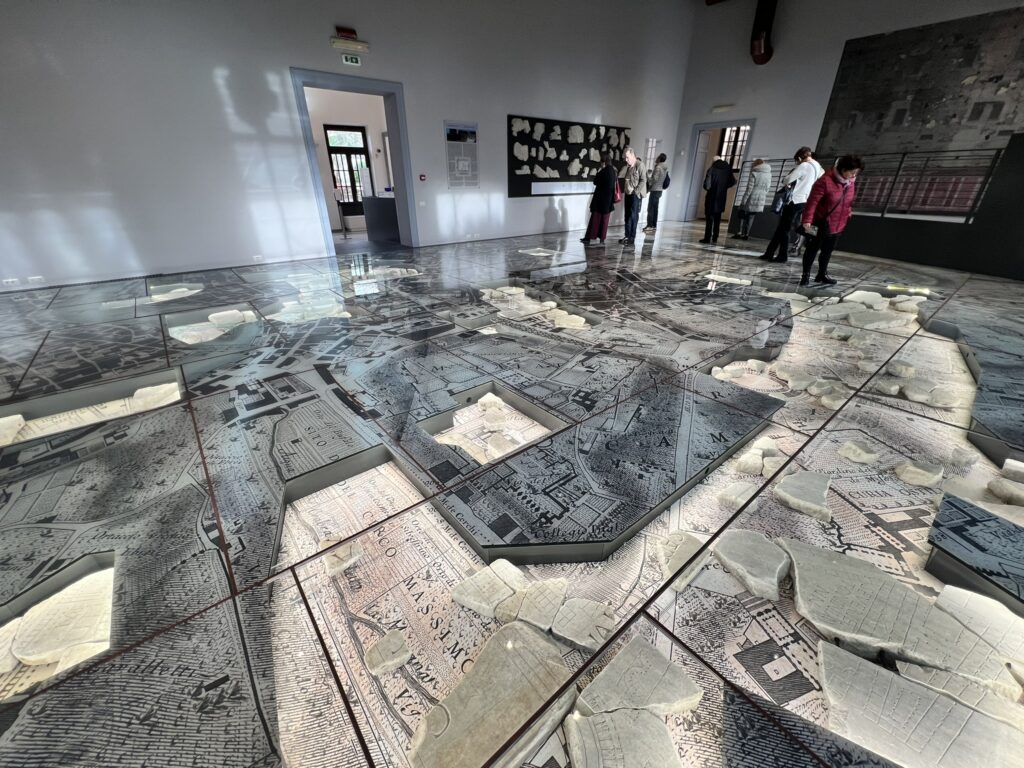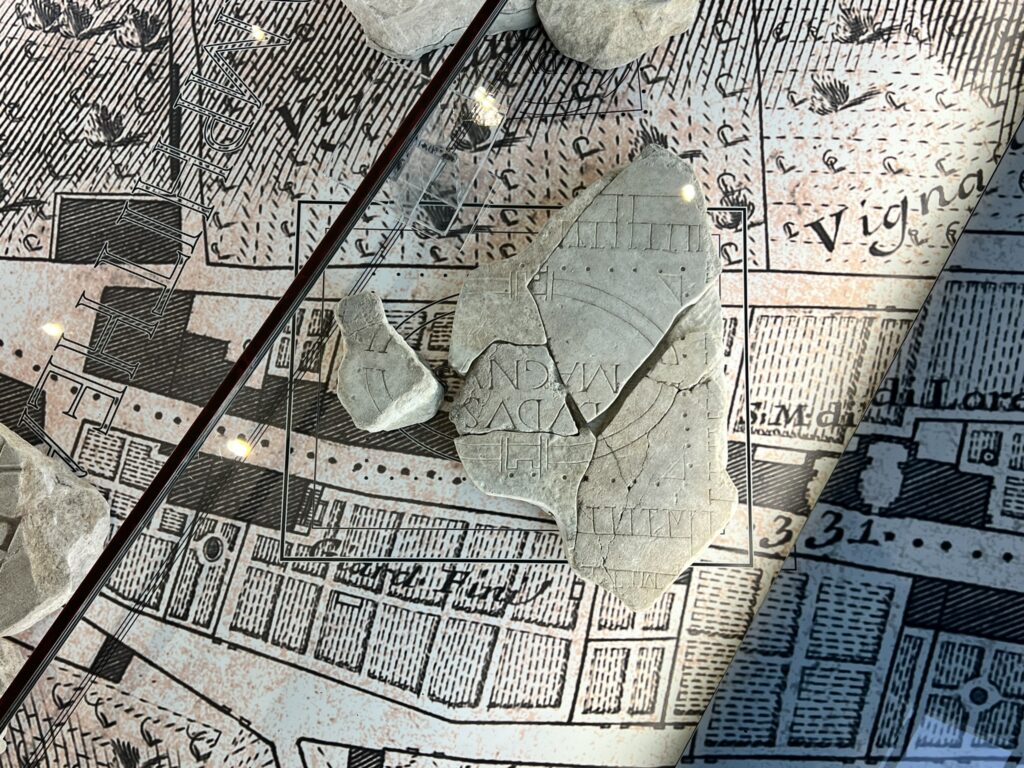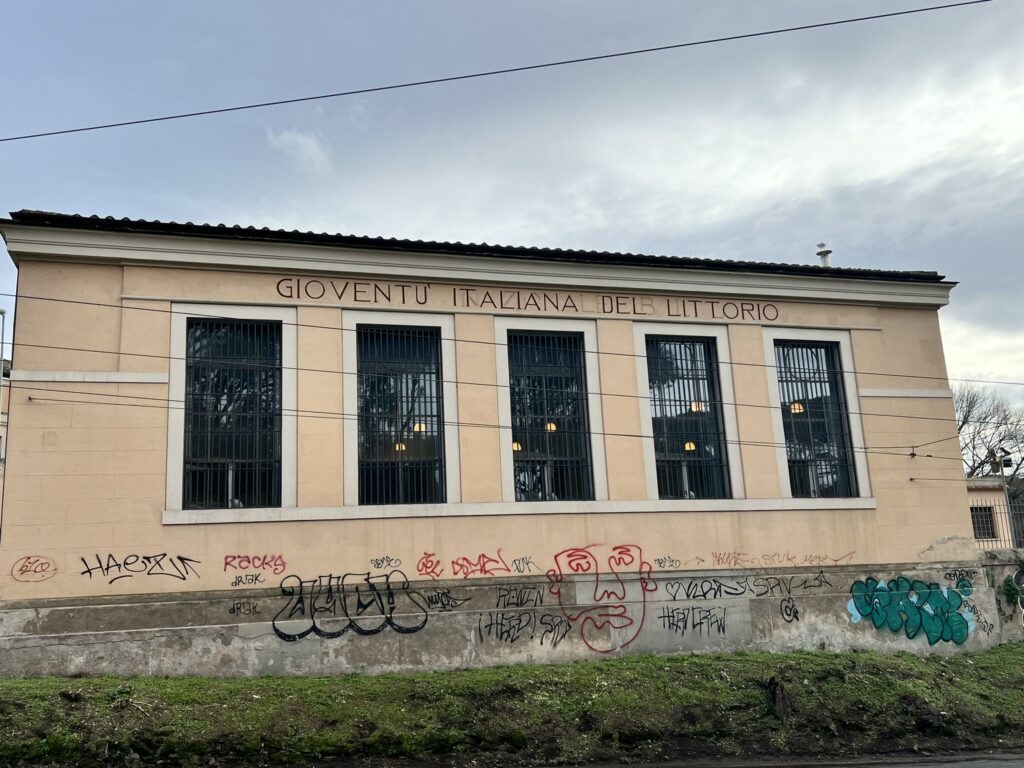
Rediscovering Rome’s Ancient Glory: The Reopening of Parco Archeologico del Celio and Museo della Forma Urbis
Yesterday (Jan 19th 2024), I embarked on a journey to uncover another hidden jewel of Rome. This city, so rich in history, finally reopened the gates of the Parco Archeologico del Celio and the Museo della Forma Urbis to the public on January 12. Having studied these fragments and known about the Archaeological area for many years, I was thrilled to finally visit them in person.
The Parco Archeologico del Celio – A Green Oasis with Historical Roots
Nestled in the northern sector of Celian Hill, the park offers a stunning view of the Colosseum. Walking through the lush greenery, I was struck by the foundations of the Temple of the Divine Claudius, a silent witness to Rome’s ancient splendor. Thick marble blocs structure and archways can still be seen near the Chruch of Santi Giovanni e Paolo. The restoration work is impressive, notably the Casina del Salvi and the former Gil Gymnasium. These transformations give visitors a unique chance to explore a vast collection of epigraphic and architectural materials that narrate tales from ancient Rome.

The Forma Urbis Museum
Museo della Forma Urbis – A Glimpse into Ancient Rome’s Urban Blueprint
In the heart of the park, housed in the former Gil Gymnasium (GIOVENTÚ ITALIANA DEL LITTORIO – Like a fascist Ymca), a modernist building created during the fascism that still has some of the 1930s feel, stands the Museo della Forma Urbis. This museum is a treasure trove showcasing the fragments of the Forma Urbis Romae, an imposing marble plan of ancient Rome commissioned by Emperor Septimius Severus between 203 and 211 AD. The new layout of the museum enhances the visitor experience, allowing a deeper engagement with this fragmented yet fascinating glimpse into Rome’s past.
Historical Insights on the Forma Urbis Severiana
The Forma Urbis Severiana, a simplified cadastral survey, represented about 13,550,000 square meters of ancient Rome at an approximate scale of 1:240. Discovered in 1562, this map, though primarily celebratory, offered a comprehensive view of the city. Today, only about a tenth of it survives, with about 200 fragments ideally placed over modern topography, housed in the Musei Capitolini.

Future Plans for the Celian Hill
The reopening of the Parco Archeologico marks the beginning of a larger transformation of the Celian Hill and the entire Monumental Archaeological Center. Plans are underway for the consolidation and recovery of the former Antiquarium Comunale, abandoned for almost a century. These projects promise to further enrich the historical narrative of this remarkable area.
Practical Guide for Visitors
For those eager to explore, the park and museum are accessible via multiple entrances: Viale del Parco del Celio 20 and 22, and Clivo di Scauro 4. The Parco Archeologico del Celio is open daily from 7 AM to 5:30 PM (standard time) and 7 AM to 8 PM (daylight saving time), while the Museo della Forma Urbis welcomes visitors from Tuesday to Sunday, 10 AM to 4 PM. Admission is free for the park, with varying ticket prices for the museum, all under 10 euros.
Conclusion
The reopening of these sites marks a significant moment for Rome’s cultural and historical heritage. These newly accessible treasures offer a unique window into the ancient city’s past, beckoning visitors to explore and discover.
Interested in seeing it yourself? We organize private tours of the Houses of the Celian Hill, the Parco del Celio, its wonderful churches, and, of course, the Museum of the Forma Urbis! Get in touch for more information!
We have not yet created a virtual tour of this place, but we may do one soon. Anyway, if you are interested in Celian Hill you can watch fro free the article about the Virtual Guided Tour The Secrets of Underground ROME HERE or if you are interested in the New Discoveries and Museums in Rome you can purchase the Virtual tour New Discoveries from Ancient Rome: Drugstore Museum, Museo Ninfeo HERE
0





Leave a Reply